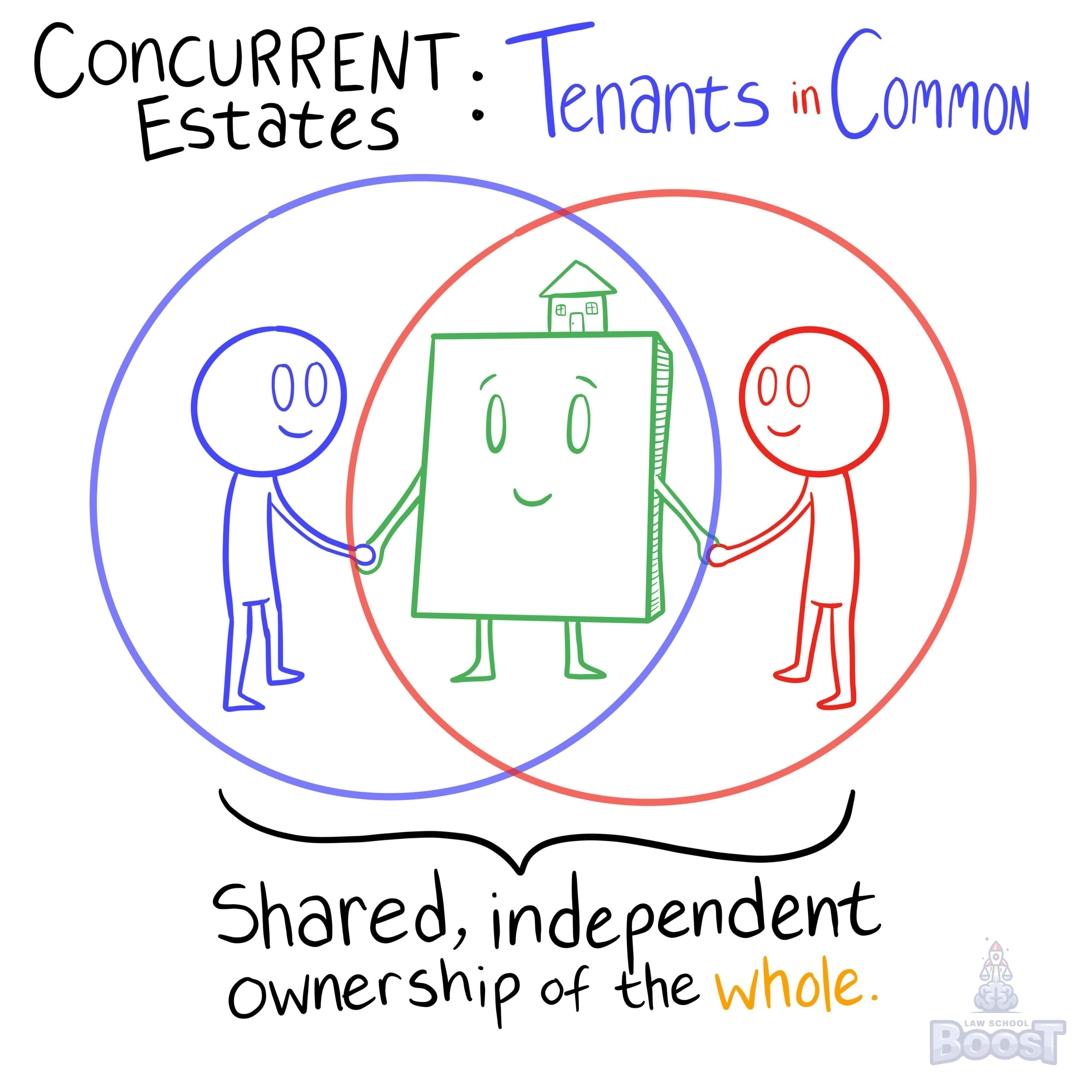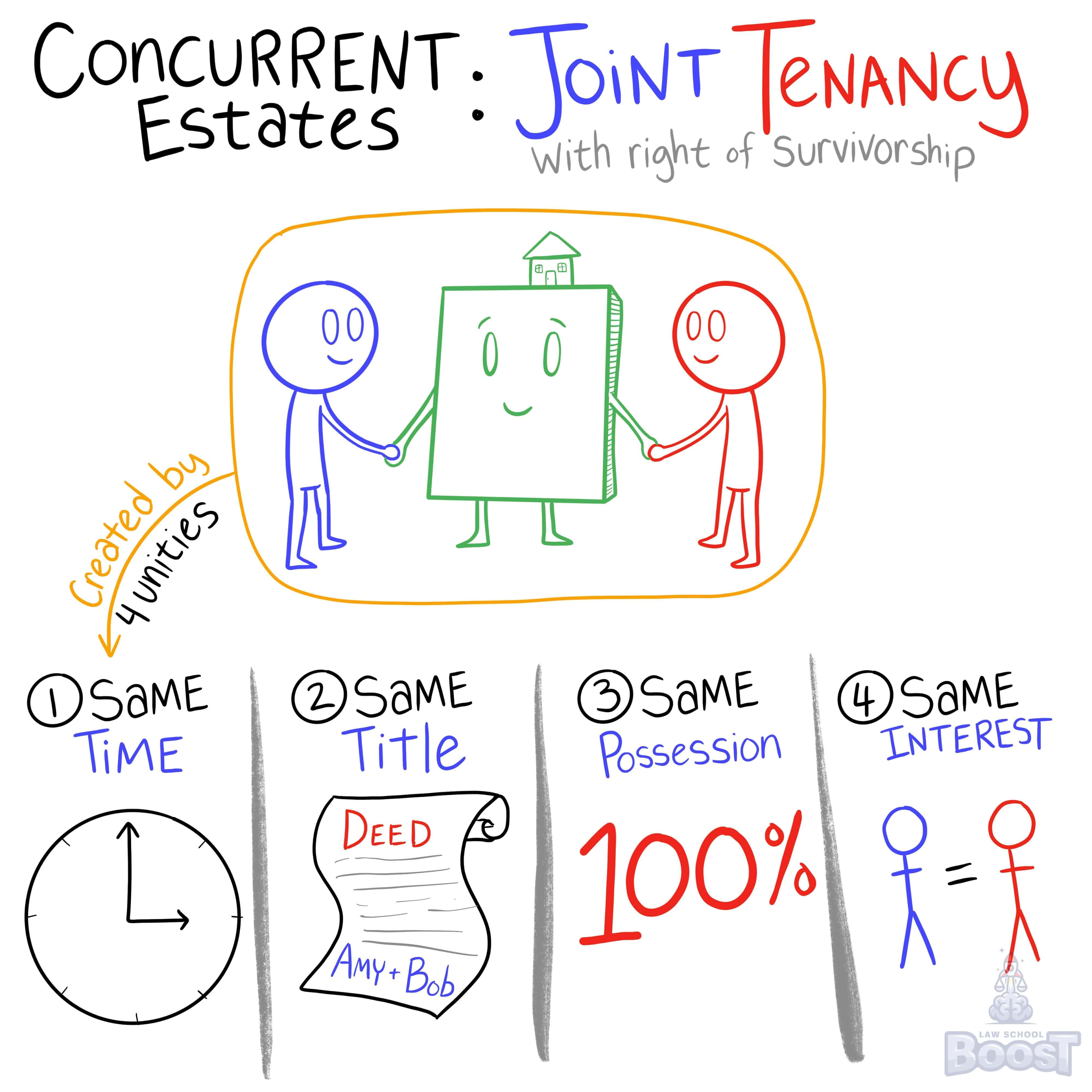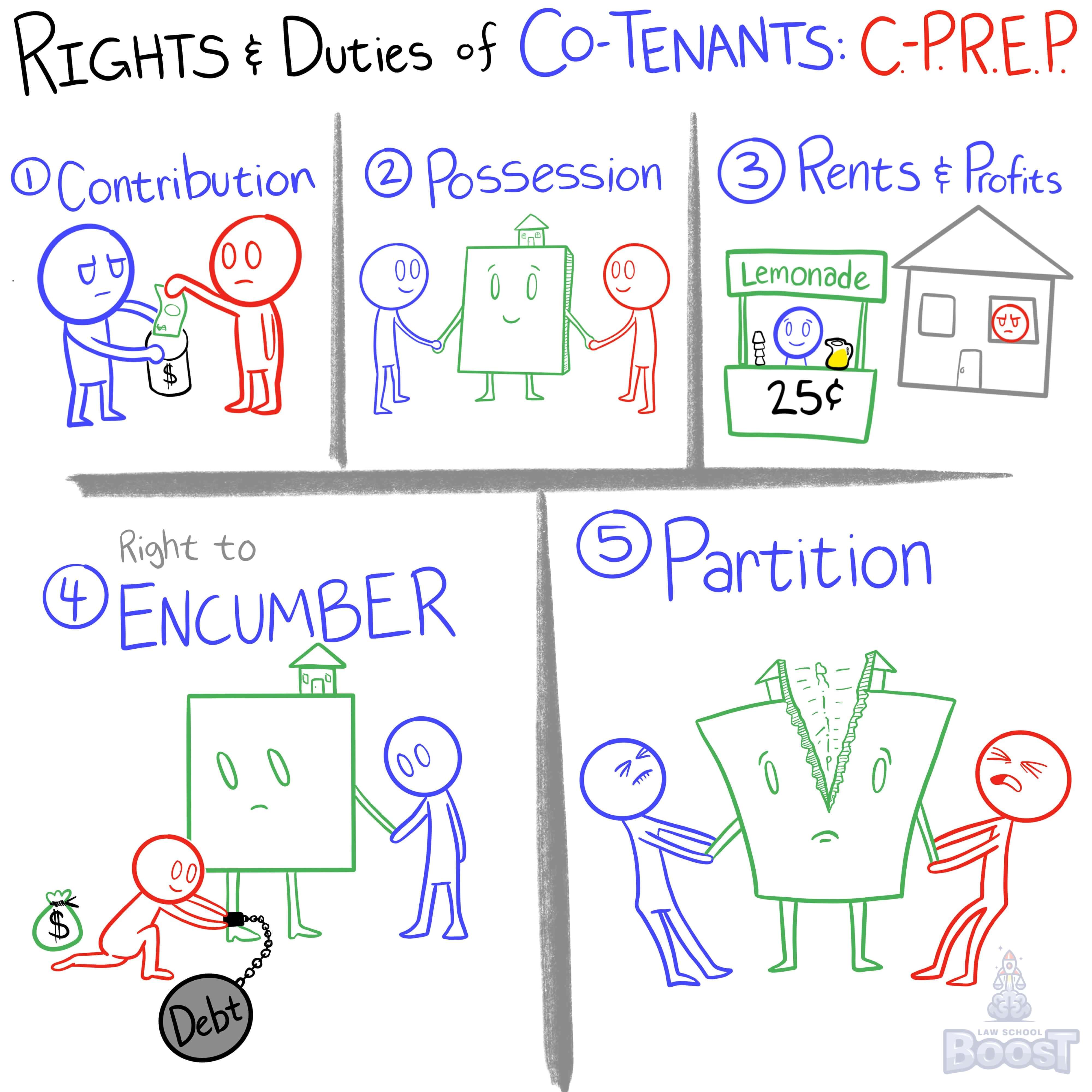😀
Real Property • Concurrent Estates
PROP#059
Legal Definition
A judicial partition is the right of any co-tenant to liquidate their interest in the property. There are two kinds of partition: (a) in kind (which courts prefer), or (b) by sale and division of proceeds. Restraints on partition are valid so long as they are limited to a reasonable time.
Plain English Explanation
Let's say that you own a piece of property with another co-tenant. If at any point you decide, "I don't want to be in a co-tenant relationship," you have the right to get out. The way you get out is called a partition. Partitions create a legal separation of joint tenants and tenants in common.
There are two ways to partition. The first way is called an in kind partition. This works great when the property can physically be divided. For example, if Amy and Bob are co-tenants at Blackacre, and Blackacre is a piece of empty grassland about the size of a football field, a partition in kind is basically a judge drawing a line down the center of the property and giving one half to Amy and the other half to Bob. The problem with this kind of partition is that it is rarely that easy to evenly divide property. For example, a court won't be able to cut a house into separate parts. Even empty parcels of land generally have more favorable parts to them.
When in kind partitions are not feasible, the second option is a partition by sale and division of proceeds. In other words, when co-tenants no longer want to be co-tenants, and it's not feasible to physically divide the property, then the property is sold, and the money is divided.
There are two ways to partition. The first way is called an in kind partition. This works great when the property can physically be divided. For example, if Amy and Bob are co-tenants at Blackacre, and Blackacre is a piece of empty grassland about the size of a football field, a partition in kind is basically a judge drawing a line down the center of the property and giving one half to Amy and the other half to Bob. The problem with this kind of partition is that it is rarely that easy to evenly divide property. For example, a court won't be able to cut a house into separate parts. Even empty parcels of land generally have more favorable parts to them.
When in kind partitions are not feasible, the second option is a partition by sale and division of proceeds. In other words, when co-tenants no longer want to be co-tenants, and it's not feasible to physically divide the property, then the property is sold, and the money is divided.
Hypothetical
Hypo 1: Amy and Bob own a condo as joint tenants. They no longer want to be co-tenants. Amy can't afford to buy Bob's share of the condo, and Bob is not interested in owning the condo anymore. Result: An in kind partition is not feasible (because you can't cut a condo in half), so Amy and Bob should opt to sell the condo and divide the money.
Visual Aids




Related Concepts
In assessing the rights and duties of co-tenants, are encumbrances allowed?
In assessing the rights and duties of co-tenants, what are rents and profits?
In assessing the rights and duties of co-tenants, what is contribution?
In assessing the rights and duties of co-tenants, what is possession?
What are the rights and duties of co-tenants?
What effect does a testamentary disposition have on a joint tenancy with right of survivorship?
What is a concurrent estate?
What is a tenancy by the entirety and how is it severed?
What is a tenancy in common?
What is required to establish a joint tenancy with right of survivorship?
What is the result of a joint tenancy that is severed?
Which type of transactions may not result in severance of a joint tenancy?


